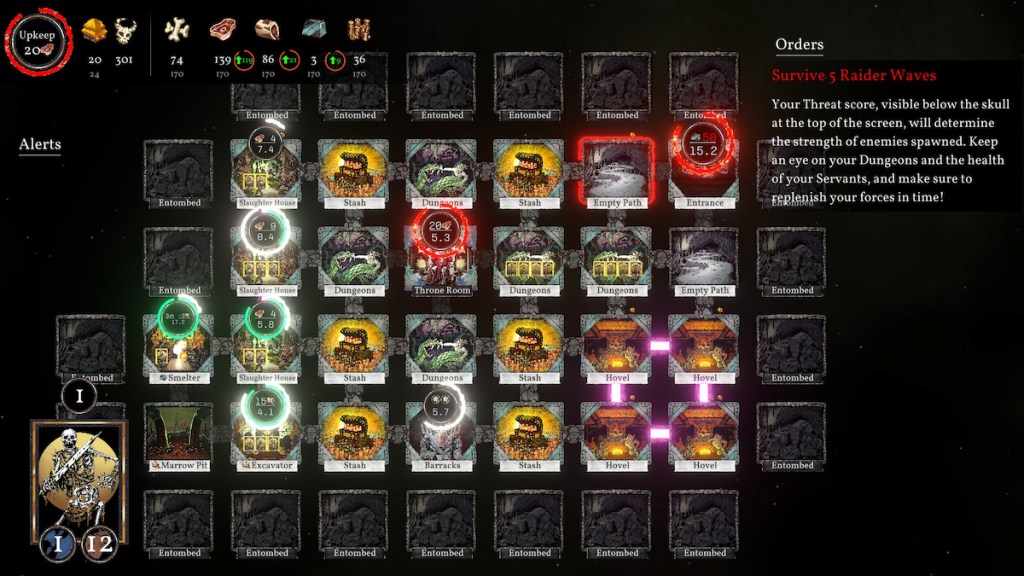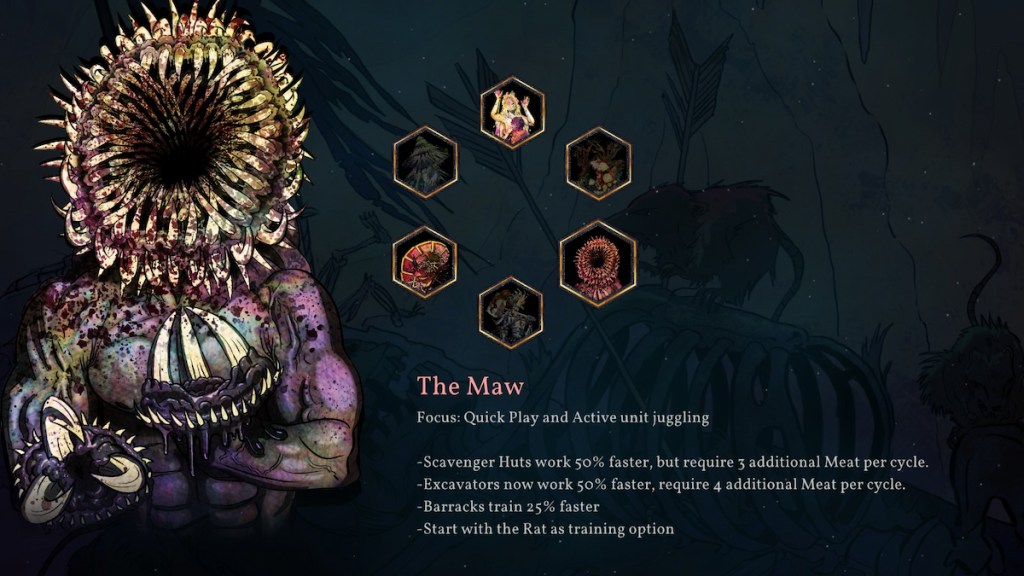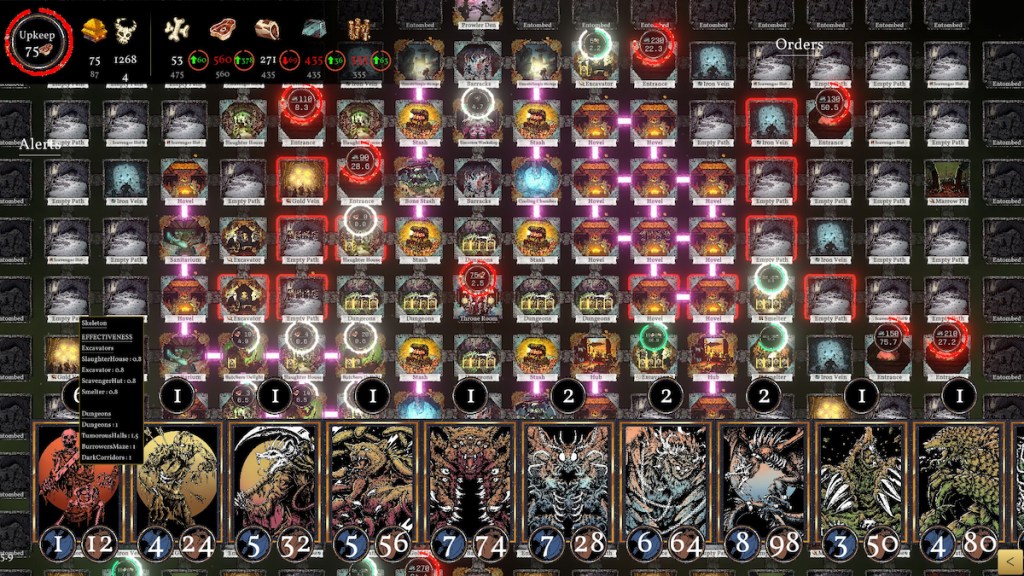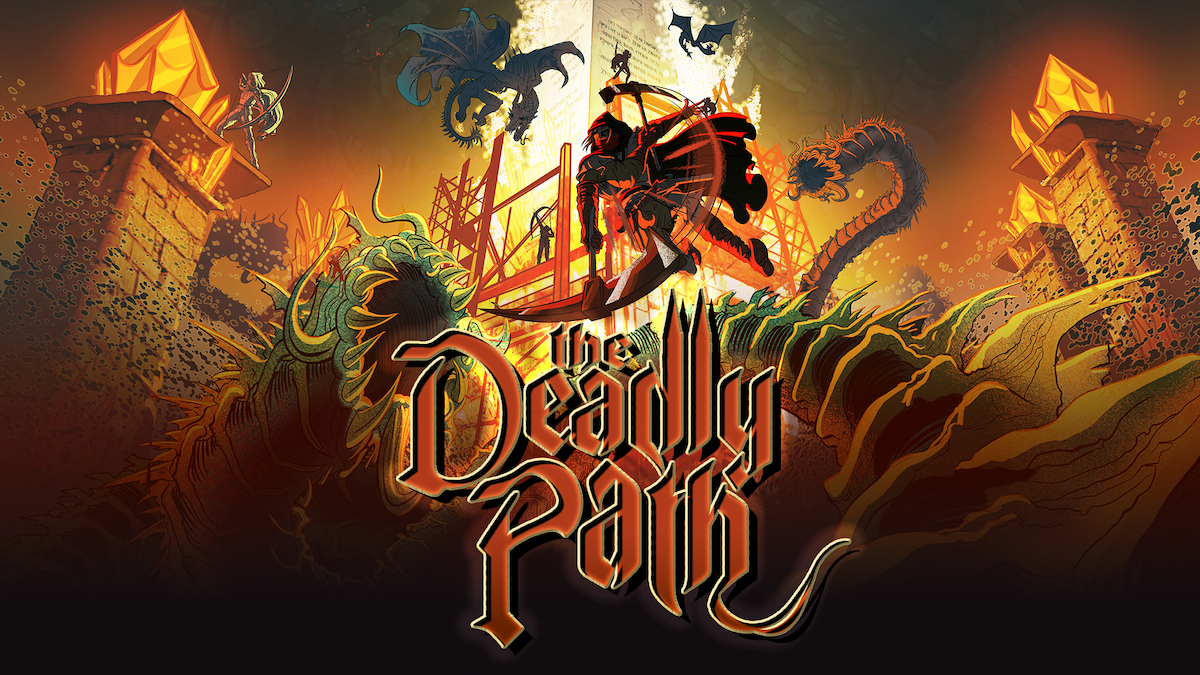With so many massive, intricate games being released this year (The Legend of Zelda: Tears of the Kingdom, Baldur’s Gate 3, etc.), I sometimes find myself in need of a palate cleanser — a compact, straightforward indie with a short playtime and great replay value. The Deadly Path, currently in development by Owlskip Enterprises, is a promising candidate for this role. I had no expectations prior to testing the demo for the first time, but I’ve since become hooked on its simple but engrossing gameplay.
The Deadly Path is described by developer Tim Sheinman as “Stacklands meets Dungeon Keeper.” It’s a base management/tower defense/deckbuilding roguelike hybrid that’s (thankfully) not nearly as complicated as it sounds. The setup is an ever-expanding grid with a central “Throne Room” tile, which houses an idol you’re tasked with constructing in honor of whatever dark deity you selected at the beginning of the game. To build the idol, you must advance through each era — the Age of Darkness, Age of Industry, Age of Ritual, and Age of Reckoning — by growing your base, accumulating resources, and defending the throne against waves of raiders.

The game’s mechanics are intuitive — you click on an entombed tile to excavate it, and, depending on what you uncover, you can then assemble a structure that will either fortify your base or produce materials such as meat, bones, marrow, gold, and iron. For example, finding an “Ancient Remains” tile allows you to create an excavator that yields bones and marrow at regular intervals until the resource is depleted, while “Empty Path” tiles are ideal spots for facilities like slaughterhouses, barracks, and hovels used to feed, train, and house your servants, respectively. Each building that generates materials needs servants to staff it, and, in turn, those servants often require a regular supply of meat or marrow.
The number and type of servants placed in each building affect its production rate, as do synergies with nearby structures — as examples, skeletons are more effective workers than zombies, and slaughterhouses yield one additional meat per 14-second cycle for every adjacent slaughterhouse. Advancing to a new era unlocks a selection of building upgrades that improve your efficiency and permit you to train more effective servants, such as moths, which excel at scavenging.

Excavating entombed tiles will occasionally reveal entrances that can be sealed when you have enough iron in your inventory. Until then, raiders will emerge and begin carving a path to the throne room, defeating your servants and destroying your buildings as they progress. The best way to defend your base is by creating a network of dungeons and filling them with combat-proficient units that can repel invaders that cross into the tile. If your enemies manage to reach the throne room — or if you fail to meet meat upkeep costs for your base — the game is over.
I’ve played the demo version of The Deadly Path several times now, and one of my favorite aspects of the game is how different each session has felt. Occasionally, I uncovered several entrances right away, which forced me to shift from meticulously building up my resource stores to a more defense-focused strategy. Once, I wasn’t finding enough of a certain material to create the layout I wanted, so I had to excavate a large number of entombed tiles before I could concentrate on building my base. This sense of unpredictability — and knowing that one ill-timed entrance excavation could potentially end the game — is one of The Deadly Path’s greatest sources of replay value.

At this stage, my main critique of The Deadly Path — other than a handful of minor bugs that have continued to be remedied with each demo build — is that I’d like the game to be more consistently challenging. There are a variety of powerful servant cards (wyverns, hydras, sorcerers, and many more) that, even during the more hectic games, I simply had no use for because the basic skeletons and zombies could manage just fine on their own. In fairness, the demo only allows you to advance to the second of four eras, so I’m hopeful that the remaining two will crank up the difficulty with tougher enemies, more entrances, or other engaging obstacles.
Overall, The Deadly Path is an intriguing little game with a lot of promise, and I’m looking forward to seeing how the full version expands upon and fine-tunes the demo.
The Deadly Path is set to be released on PC later this year.






Published: Aug 20, 2023 10:00 am